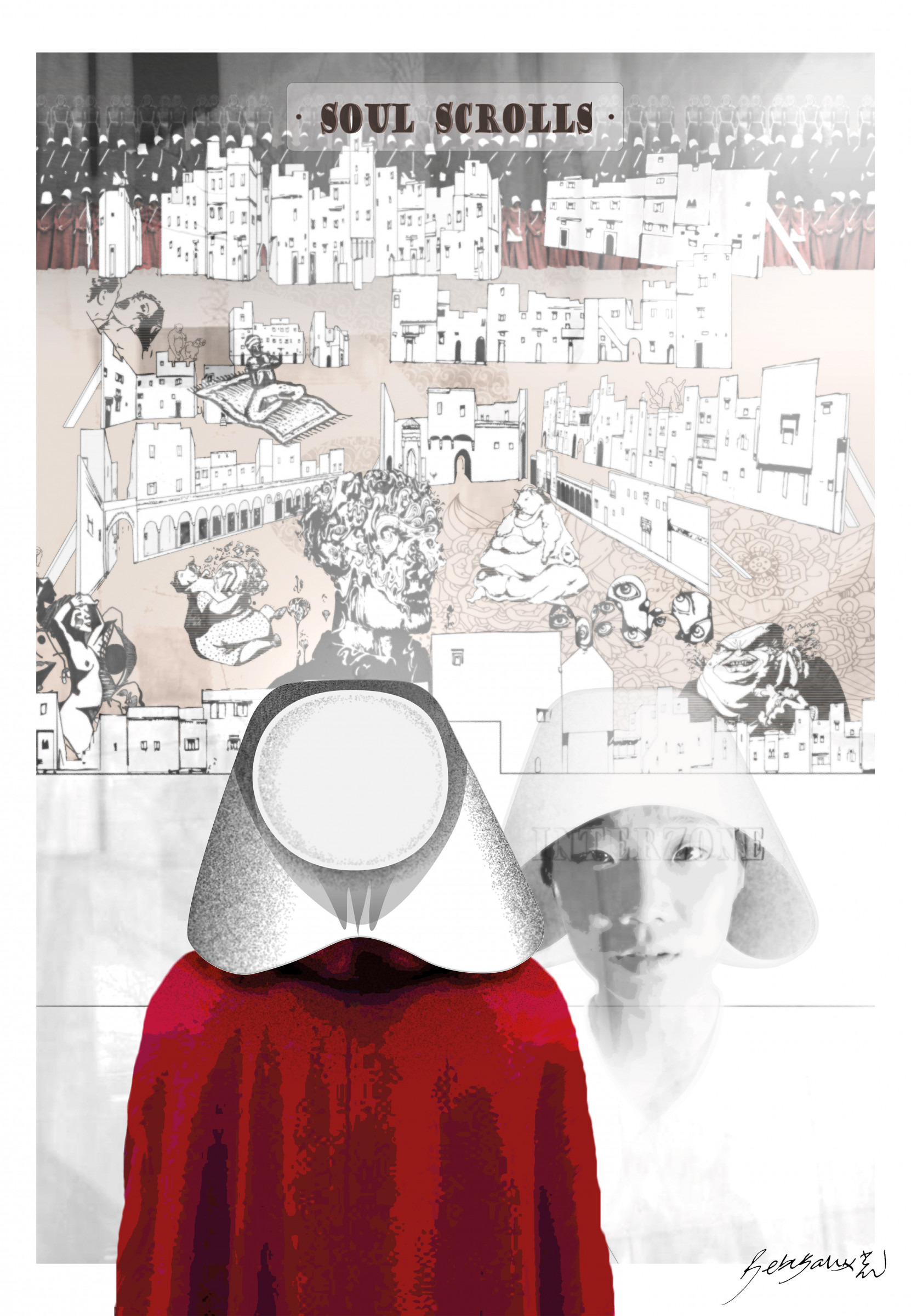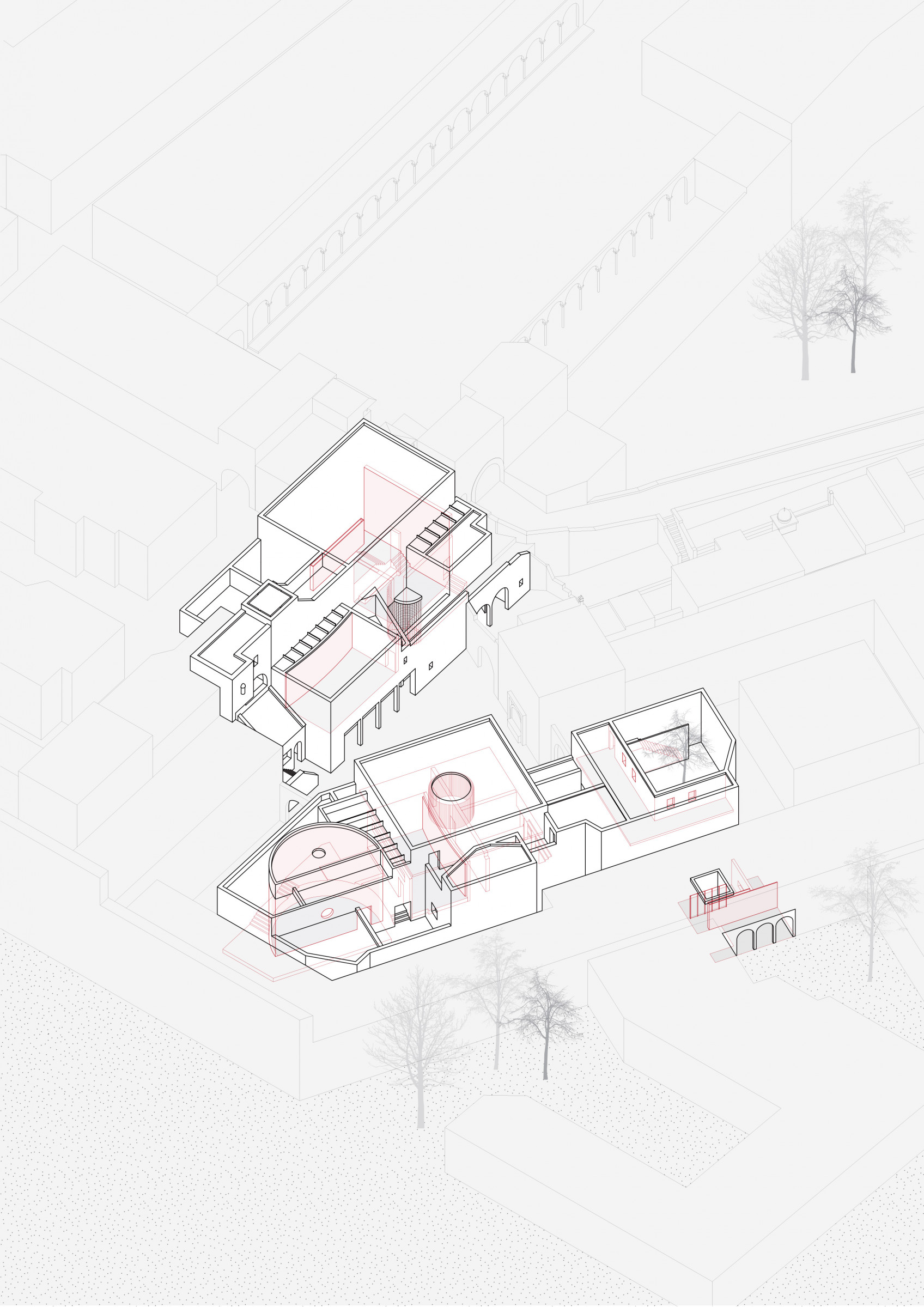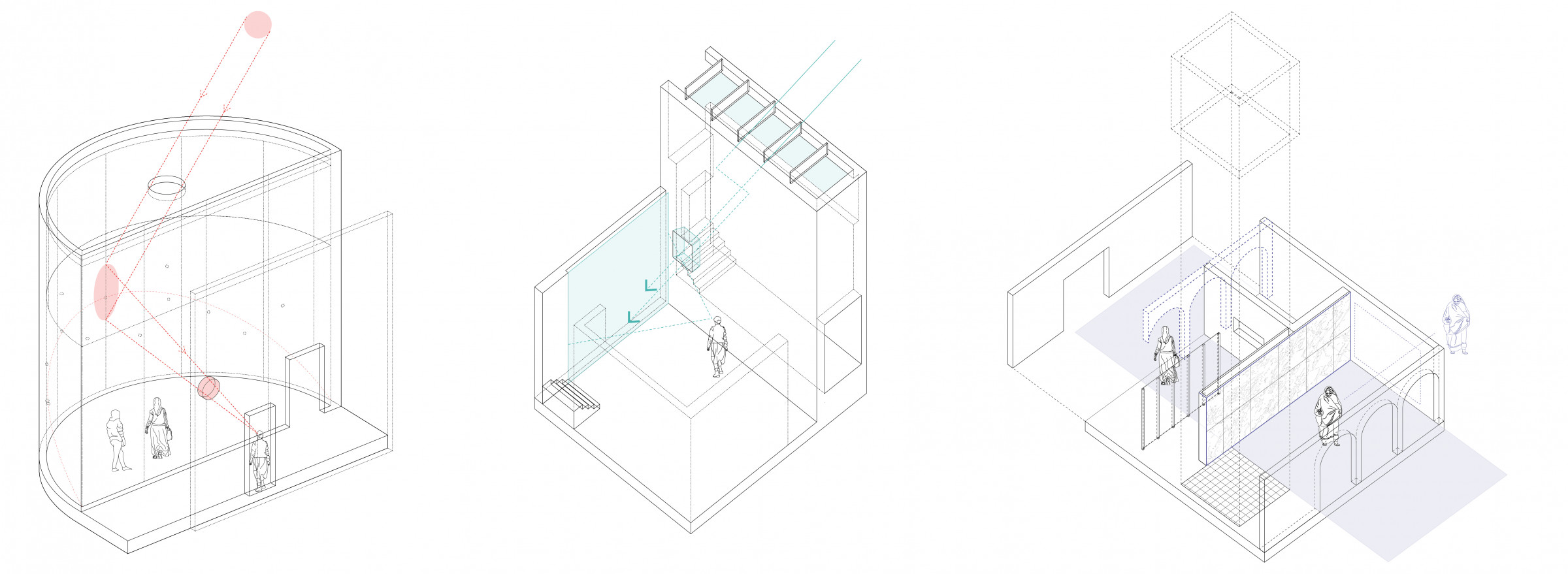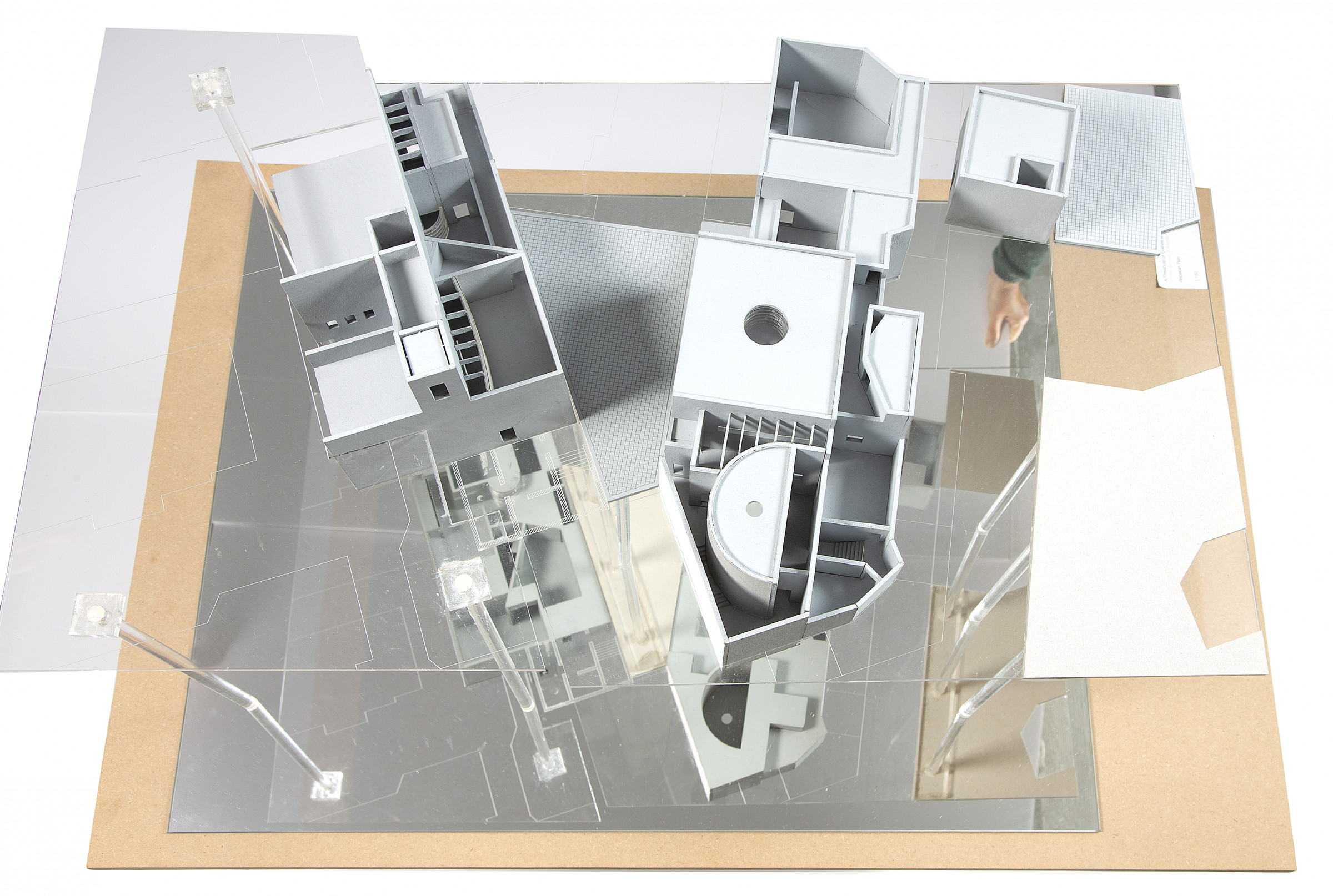A Threshold of Evanescence for the Women of Bousbir
Student: Rebekah Tien
Title: A Threshold of Evanescence for the Women of Bousbir
Semester: 2019 January
Teachers: Jorge Mejia Hernandez, Gilbert Koskamp
This project is represented in our chair's contribution to the 2020 national Archiprix: A Threshold of Evanescence for the Women of Bousbir.
Bousbir Quartier Réservé (1924-1955) was a highly regulated, and completely walled-off red light district built to satisfy the sexual needs of European males during the French Protectorate in Casablanca. It was a projection of a far-east fantasy, an erotic theme park. Yet, for the women working within, Bousbir was a perpetual prison – where time seemed to loop, with the women stripped of their individuality – resembling the social order of the religious dystopia of Margaret Atwood’s novel The Handmaid’s Tale.
This project is an intervention of two buildings and a gate along the route from the walled-off district to the external medical dispensary, which turned the women’s weekly route for the mandatory STI inspection into an extra-thick threshold between the two realities. The project challenges the role of Light, Wall and Opening in Bousbir and works with these modest tools in (re)introducing “temporality” and the sense of “individuality” to the women of Bousbir.
More information about the project can be found here.
Bousbir Quartier Réservé (1924-1955) was a highly regulated, completely walled-off red light district. It was built to satisfy the sexual needs of European men, and was a solution to the STI problem caused by colonial prostitution during the French Protectorate in Casablanca. It was the projection of a Far Eastern fantasy, an erotic theme park. Yet, for the working women within, Bousbir was a perpetual prison, where time seemed to loop and where they were robbed of their individuality. This situation resembles that of the social order of the religious dystopia in Margaret Atwood’s The Handmaid’s Tale. In a sense, the district was Casablanca in miniature. The notion of ‘Potemkin city’ vividly illustrates how the darkness of Bousbir was masked by a strategically built filter for men in architectural and social layers. Further readings of the nature of Bousbir and its theoretical development took the form of morphotypological investigations, together with an analysis of literary fiction. The ever-changing quality of light, revealed in various ways through the different properties of walls, evokes a sense of temporality. The sense of individuality in a collective setting is strengthened when multiple perspectives converge through carefully placed and proportioned openings. These tools were used to develop three spatial systems with different light-wall relationships. First, there is the abstraction of the wall when strong direct light is shaped and made manifest by that wall. Second, there is the abstraction of light when walls are revealed by indirect light so that their materiality emerges. And third, there is the abstraction of wall and light when wall and indirect light work together in creating an optical illusion of an extended reality. The three types of walls were then further developed accordingly on both theoretical and technical levels, thereby organizing the threshold between district and dispensary into a spatial sequence. As this threshold built to enable the rereading of reality disintegrates, it opens up the possibility of reconnecting with the distant memories of temporality and individuality. Lastly, this project is also an architectural representation of my self-exploratory process. The stories of three women – a woman of Bousbir, a handmaid, and myself – become one and materialize in this Threshold of Evanescence.
More information about this project can be found here.
A Threshold of Evanescence for the Women of Bousbir





